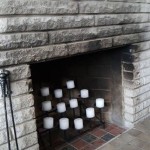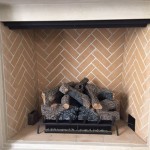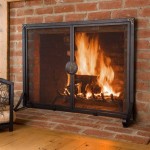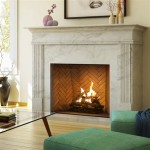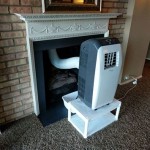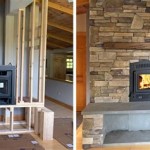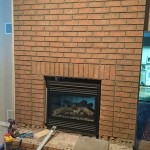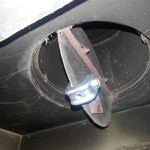Silver Travertine Stacked Stone Fireplace: A Timeless Addition to Any Home
A fireplace serves as a focal point in a living space, offering warmth, ambiance, and a touch of elegance. The selection of materials for a fireplace significantly impacts its aesthetic appeal and overall design integrity. Among the various options available, silver travertine stacked stone has emerged as a popular choice, lauded for its unique beauty, durability, and versatility. This article explores the characteristics, benefits, installation considerations, and maintenance requirements of a silver travertine stacked stone fireplace, providing a comprehensive understanding of this sophisticated design element.
Travertine is a form of limestone deposited by mineral springs, particularly hot springs. Its distinctive appearance is characterized by naturally occurring pits and troughs, creating a unique and textured surface. Silver travertine, in particular, exhibits a range of cool, sophisticated tones, including shades of gray, silver, and beige, often with subtle variations and veining. This color palette makes it adaptable to a wide variety of interior design styles, from modern minimalist to rustic traditional.
The "stacked stone" construction involves arranging individual pieces of stone, typically in a linear or offset pattern, to create a textured, three-dimensional surface. This method enhances the natural beauty of the travertine by showcasing its variations in color and texture. The stacked stone look adds depth and visual interest, transforming a simple fireplace into a striking architectural feature.
Aesthetic Appeal and Design Versatility
The allure of a silver travertine stacked stone fireplace lies in its ability to seamlessly integrate into diverse design aesthetics. Its neutral color palette provides a versatile backdrop that complements various furniture styles, wall colors, and decorative accessories. The cool tones of silver travertine evoke a sense of tranquility and sophistication, making it an ideal choice for creating a relaxing and inviting atmosphere.
In a modern minimalist setting, a silver travertine stacked stone fireplace can provide a touch of organic texture and warmth, preventing the space from feeling sterile or impersonal. The clean lines of the stacked stone complement the minimalist aesthetic, while the natural variations in the travertine add visual interest. The fireplace can be paired with sleek, contemporary furniture and minimal accessories to create a sophisticated and uncluttered look.
For a more traditional or rustic interior, a silver travertine stacked stone fireplace can enhance the existing warmth and character. The textured surface of the stacked stone adds depth and dimension, while the neutral color palette ensures that the fireplace remains a timeless and elegant addition. The fireplace can be paired with comfortable, upholstered furniture, rich wood accents, and traditional artwork to create a cozy and inviting atmosphere.
The versatility of silver travertine also extends to its ability to be incorporated into different fireplace designs. It can be used to create a full fireplace surround, a partial accent wall, or a decorative mantel. The stacked stone can be arranged in various patterns, such as a linear stack, an offset stack, or a random stack, to create a unique and personalized look. Different grout colors can also be used to further customize the appearance of the fireplace, highlighting the individual stones and creating a specific aesthetic effect.
Furthermore, silver travertine can be paired with other materials to enhance its visual appeal. Combining it with wood, metal, or glass accents can create a dynamic and visually interesting design. For example, a silver travertine stacked stone fireplace with a reclaimed wood mantel can create a rustic yet refined look. Alternatively, pairing it with a sleek metal surround can enhance the modern aesthetic of the fireplace.
Durability and Maintenance
Beyond its aesthetic qualities, silver travertine is a durable and long-lasting material that can withstand the heat and wear associated with a fireplace. Its natural density and strength make it resistant to cracking, chipping, and other forms of damage. When properly sealed, it is also resistant to staining and water damage, ensuring that the fireplace will maintain its beauty for years to come.
The durability of travertine also makes it a practical choice for a high-traffic area, such as a living room or family room. It can withstand the daily wear and tear of everyday use, without showing signs of wear or damage. This makes it an ideal choice for families with children or pets, who may be more likely to accidentally bump into or scratch the fireplace.
Maintaining a silver travertine stacked stone fireplace is relatively straightforward. Regular cleaning with a mild soap and water solution is typically sufficient to remove dirt and debris. Avoid using harsh chemicals or abrasive cleaners, as these can damage the surface of the travertine. It is also important to reseal the travertine periodically, typically every one to two years, to maintain its stain resistance and protect it from water damage.
The stacked stone construction of the fireplace can also make it easier to clean. The individual stones are typically spaced slightly apart, allowing for easy access to clean between them. A soft brush or vacuum cleaner attachment can be used to remove dust and debris from the crevices between the stones. This helps to maintain the overall cleanliness and appearance of the fireplace.
In addition to regular cleaning and sealing, it is also important to inspect the fireplace regularly for any signs of damage, such as cracks or chips. Addressing any damage promptly can prevent it from worsening and potentially compromising the structural integrity of the fireplace. Minor repairs can often be done yourself, but for more significant damage, it is best to consult with a professional stonemason or contractor.
Installation Considerations
Installing a silver travertine stacked stone fireplace requires careful planning and execution to ensure a safe and aesthetically pleasing result. It is generally recommended to hire a qualified professional, such as a stonemason or contractor, to handle the installation process. A professional will have the necessary experience and expertise to properly prepare the substrate, install the stacked stone, and ensure that the fireplace meets all applicable building codes and safety regulations.
The first step in the installation process is to prepare the substrate. This typically involves cleaning and leveling the existing wall surface to create a solid and stable foundation for the stacked stone. If the existing wall is not level or structurally sound, it may need to be reinforced or rebuilt before the stacked stone can be installed.
Next, the stacked stone is applied to the substrate using a thin-set mortar. The mortar is applied to the back of each stone, and the stone is then pressed firmly into place. The stones are typically arranged in a specific pattern, such as a linear stack, an offset stack, or a random stack. It is important to ensure that the stones are level and properly aligned to create a uniform and aesthetically pleasing appearance.
Once the stacked stone has been installed, the grout is applied between the stones. The grout fills the gaps between the stones and helps to create a watertight seal. The grout can be colored to match the travertine or to create a contrasting effect. After the grout has dried, it is cleaned and sealed to protect it from staining and water damage.
In addition to the installation of the stacked stone, it is also important to consider the installation of the fireplace insert or firebox. This typically involves connecting the fireplace to a chimney or vent system. It is crucial to ensure that the fireplace is properly vented to prevent the buildup of dangerous gases, such as carbon monoxide. A qualified professional can help to ensure that the fireplace is properly installed and vented.
Finally, it is important to consider the surrounding area of the fireplace. The area around the fireplace should be protected from heat and sparks. This can be achieved by using a fire-resistant hearth or by placing a protective screen in front of the fireplace. It is also important to keep flammable materials, such as furniture and curtains, away from the fireplace.
In summary, a silver travertine stacked stone fireplace offers a unique combination of aesthetic appeal, durability, and versatility. Its neutral color palette and textured surface make it an ideal choice for a wide variety of interior design styles. Its natural density and strength make it resistant to damage, while its easy-to-clean surface makes it a practical choice for a high-traffic area. When properly installed and maintained, a silver travertine stacked stone fireplace can provide years of warmth, beauty, and enjoyment.

Silver Travertine Stacked Stone Fireplace Feature Wall Decor Fireplaces

Silver Travertine 6x24 Split Face Stacked Stone Ledger Panel Fireplaces Modern Fireplace

5 Stacked Stone Surrounds Travertine Quartzite Or Marble

Silver Travertine Stack Stone Qdi Surfaces

Silver Travertine Stack Stone Qdi Surfaces

Heat Glo Primo 60 With Silver Travertine Stacked Stone Gagnon Clay S

Silver Travertine 6x24 Split Face Stacked Stone Ledger Panel

Msi Ledgestone Veneer Silver Travertine Panel Split Face Floorlife

Silver Travertine Stacked Stone Msi Wall Tile Veneers

Silver Travertine Stacked Stone Ledger Gray
Related Posts

